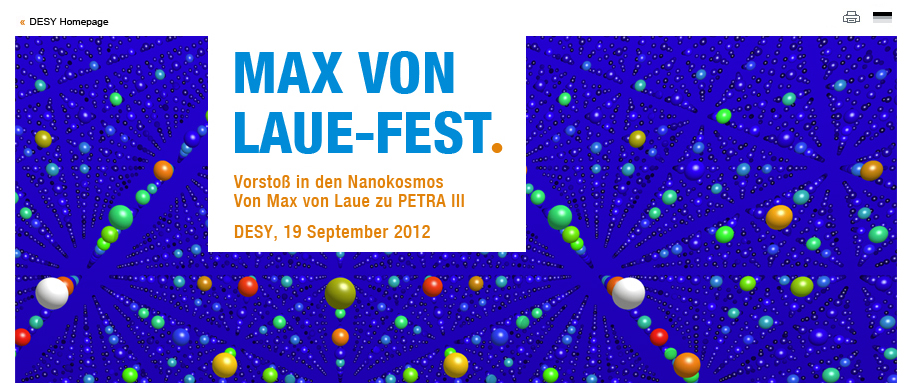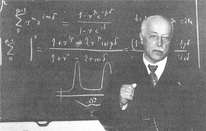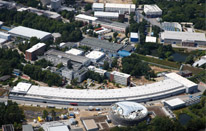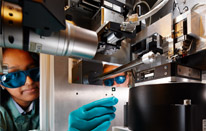

With his revolutionary X-ray diffraction experiment at crystals in 1912, the physicist Max von Laue opened the door to the microcosm of crystals, atoms and molecules. Max von Laue discovered that there are two reasons for regular spot pattern which an X-ray beam leaves on a photographic plate: first, the regular lattice structure in which atoms are arranged in crystals; second, the wave structure of X-ray beams which are continuously diffracted in the same way at the regular crystal lattice. Already two years later he was awarded the Nobel Prize. |

A hundred years ago Max von Laue discovered X-ray diffraction at crystals. On this occasion DESY presents the unique research campus that is currently built in Hamburg and which will lead the work of the famous physicist into the future. In a naming ceremony, the PETRA III experimental hall will receive the name “Max von Laue”. Modern X-ray sources as PETRA III revolutionise the possibilities to decode the molecular structure and function of high-tech materials and medical substances. |

With PETRA III, DESY has built one of the best X-ray radiation sources in the world. As the most brilliant light source of its kind, PETRA III offers scientists from all over the world outstanding opportunities for experimentation, laying the foundation for the medicines and nanotechnology of tomorrow. With the super-fine brilliant PETRA III X-ray beam, it is possible to investigate very small material samples and determine the arrangement of the atoms with extreme accuracy. Molecular biologists for example can resolve the spatial atomic structure of tiny protein crystals. PETRA III also offers a wide range of possibilities in the vast field of materials sciences. More information
|
||
 |
Contact |
Imprint |
Data Privacy Policy
© 2012, Deutsches Elektronen-Synchrotron |
